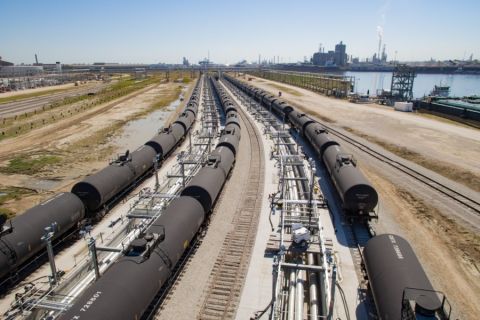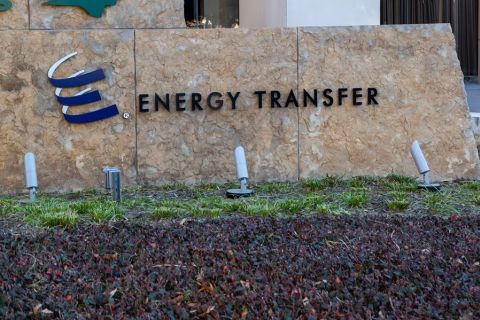For James Jolly, director of Dispatch Operations for Central Hudson Gas & Electric Corporation, responding to gas emergencies trumps his other duties and becomes job number one, in seconds. When a customer detects a problem with a gas line or meter, it falls to Jolly and his team to react quickly. Jolly’s target window for getting workers to an emergency site is about 20 minutes, as set by the utility in compliance with Public Service Commission response levels. It’s a small window to operate within when considering a diverse service area.
Central Hudson’s efforts deserve praise. But it’s even more remarkable when you learn that Jolly and his colleagues have carried out their work during the past five years in the face of decreasing headcount and increased meter sets.
Central Hudson serves more than 370,000 gas and electric customers across a service territory that straddles the Hudson River from suburban New York City to Albany. Twenty percent of Central Hudson’s customers rely on the corporation for natural gas. Central Hudson’s natural gas system consists of 163 miles of transmission pipelines and 1,163 miles of distribution pipelines, as well as customer service lines and meters.
“Because of schedules and workload, we typically have to go outside the district in which the emergency call occurs to find a chief and mechanic to respond; reaching beyond the district for help can mean the response time is pushed even further,” says Jolly. “If it’s an after-hours call, we also have to make sure we’re choosing people in a way that ensures an equitable distribution of overtime.”
A Boost in Response Speed
Over the last five years, Central Hudson’s System/Dispatch Operations group has more often than not bested their corporate target response time. For instance, in 2005 the target was 22.5 minutes; Central Hudson’s average response was 22.2 minutes that year. In 2006 and 2007, the mark to hit was 22.5 minutes and 21.3 minutes, respectively. Central Hudson responded by posting a total average response time of 21.3 minutes in 2006 and 20.7 minutes in 2007; these times were even lower than the bar set for superior response time both years. For the years that Central Hudson didn’t reach the target response time (i.e., 2008 and 2009), the company’s average response was no more than 42 seconds off the goal.
From 2004 to 2009, Central Hudson saw a reduction in its response team. Although the company had fewer workers to handle a greater workload, its total average response time was still 6 percent lower in 2009 than in 2004.
Automating Callout and Resource Management
What’s behind Central Hudson’s ability to do more with less? The company credits an automated callout and resource management system made by ARCOS, Inc. The ARCOS System, installed in 2005 at Central Hudson, is a hosted, internet-based application that automatically identifies available crews, calls them, analyzes responses and reports on the outcome. And since implementing the ARCOS System, Central Hudson has relied on the software to make sure first responders get to the scene of trouble within the approximately 20-minute response time.
“We use ARCOS for after-hours calls, for shift workers and most of our classified employees after their 7:30 a.m. to 4 p.m. shift,” says Jolly. “Our schedules are maintained in the ARCOS System, and Central Hudson payroll uses the software to cross-check timesheets.”
According to Jolly, the ARCOS System accounts for complex work rules that ensure overtime is parceled out to gas chiefs and mechanics in accordance with union agreements. Before the ARCOS System was in place, Central Hudson relied on a patchwork computer system that would require programmers to periodically tinker with code as work rules changed.
“It was nightmarish to go back into our old software and make sure we weren’t overlooking any updated union callout rules, plus we were spending hours of programmers’ time to make edits,” adds Jolly. “ARCOS handles these sorts of changes with a few keystrokes.”
Calling All Hands
The ARCOS System stores the current work rules, such as the order in which gas personnel on different lists should be called, and juggles an ever-changing line-up of available staff. The system enables the Central Hudson workforce to update their status, so managers like Jolly can adjust staffing around the clock. The software also tracks the number of first responders available as well as construction and maintenance workers across all districts.
If, for example, the system shows there are no chief gas mechanics available for a callout, then it automatically contacts the first available first-class mechanic while factoring in any union rules. Some of Central Hudson’s electric workers are also certified to handle gas emergencies, and the ARCOS System is programmed to tap these employees if and when necessary.
“The ARCOS System knows who’s available and when, which means we can get workers to an emergency site faster to repair and restore service,” says Jolly. “We’re a classic example of how automated callout and resource management can help optimize performance when resources are stretched, and stay in compliance with regulators.”
Recommended Reading
Canadian Railway Companies Brace for Strike
2024-04-25 - A service disruption caused by a strike in May could delay freight deliveries of petrochemicals.
Talos Energy Expands Leadership Team After $1.29B QuarterNorth Deal
2024-04-25 - Talos Energy President and CEO Tim Duncan said the company has expanded its leadership team as the company integrates its QuarterNorth Energy acquisition.
Energy Transfer Ups Quarterly Cash Distribution
2024-04-25 - Energy Transfer will increase its dividend by about 3%.
Guyana’s Stabroek Boosts Production as Chevron Watches, Waits
2024-04-25 - Chevron Corp.’s planned $53 billion acquisition of Hess Corp. could potentially close in 2025, but in the meantime, the California-based energy giant is in a “read only” mode as an Exxon Mobil-led consortium boosts Guyana production.
CNX, Appalachia Peers Defer Completions as NatGas Prices Languish
2024-04-25 - Henry Hub blues: CNX Resources and other Appalachia producers are slashing production and deferring well completions as natural gas spot prices hover near record lows.





